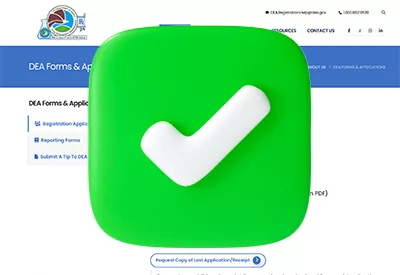Pain and Opioid Use in Older Adults
Shireen Wissa, PharmD candidate. Keck Graduate Institute School of Pharmacy, Claremont, CA.
Talia Puzantian, PharmD, BCPP. Keck Graduate Institute School of Pharmacy, Claremont, CA.
Ms. Wissa and Dr. Puzantian have no financial relationships with companies related to this material.
Pain in older adults is common—it could be anything from achy joints to sharp postoperative pain. Before jumping to treatments, we need to determine the cause. While opioids help with acute pain, they can also come with complications, especially in older adults, due to age-related changes that affect drug metabolism, medication interactions, and the potential for toxicity. However, in certain cases, a low dose of opioids can be appropriate when pain significantly impacts quality of life and other treatments have failed. Conditions like cancer-related pain or specific palliative care situations may warrant chronic opioid use.
Age-related changes
Older adults have more fatty tissues, decreased water weight, slower digestion, and reduced liver and kidney function. These changes mean that drugs like opioids can hang around in the body longer and have stronger effects. As a general guide for older adults, start with a lower opioid dose, increase slowly, dose less frequently, and monitor more closely to avoid problems. For more information, visit: www.thecarlatreport.com/opioidsolderadults. When prescribing opioids to patients with renal or hepatic impairment, consider:
Renal impairment
For patients with chronic kidney disease, defined as estimated glomerular filtration rate (eGFR) <60 mL/min for at least 3 months, opt for safer opioid alternatives that require minimal renal metabolism:
- Recommended: Transdermal fentanyl, transdermal buprenorphine, or hydromorphone
- Avoid: Meperidine, codeine, and morphine
Monitor serum creatinine, creatinine clearance, and eGFR at least annually to assess kidney function and adjust dosing as needed.
Hepatic impairment
Patients with significant liver dysfunction, especially those classified as Child-Pugh Class B or C, should have their liver enzymes monitored at least annually.
- Preferred: Fentanyl has less hepatic metabolism and thus lower risk of accumulation.
- Use with caution: Morphine and hydromorphone may be used but may require dose reduction and less-frequent dosing to prevent accumulation (Bosilkovska M et al, Drugs 2012;72(12):1645–1669).
Side effects of opioids
Opioids can cause constipation, sedation, falls, fractures, memory impairment, and delirium in older adults. The risk goes up when opioids are combined with other psychotropic medications. Medications with anticholinergic effects such as tricyclic antidepressants (TCAs), paroxetine, some antipsychotics, antihistamines, and antiparkinsonian agents may increase opioid-related constipation, sedation, and confusion. For examples, visit: www.thecarlatreport.com/opioidsolderadults.
Constipation
Opioid-related constipation doesn’t get better over time, so you’ll need to treat it from the start. The best approach is a stimulant laxative like senna or bisacodyl, plus a stool softener like docusate. Avoid bulk-forming fiber laxatives like psyllium, which can contribute to distended colon and bowel obstruction (Chokhavatia S et al, Drugs Aging 2016;33(8):557–574). Watch out for other medications your patient is taking that might also cause constipation, such as anticholinergics, some antidepressants like TCAs, antipsychotics, and antiparkinsonian agents. Encourage your patient to stay hydrated, eat a diet high in soluble fiber (like oatmeal, barley, and prunes), and stay active.
Sedation, cognitive impairment, and fall risk
Opioids can increase the effects of other sedating substances, including:
- Benzodiazepines (BZDs)
- Hypnotics (eg, Z-drugs)
- Anticonvulsants (eg, gabapentinoids)
- Antidepressants
- Antipsychotics
- Alcohol
These combinations can cause orthostatic hypotension, delirium, confusion, and blurry vision, all of which can increase the risk for falls and fractures. The first few days on opioids are the riskiest for sedation, so warn your patient to be careful during this period and watch for signs like dizziness. Reducing the dose, avoiding extended-release formulations, and dosing less frequently can help reduce these risks.
Respiratory depression
Respiratory depression is one of the most serious risks when using opioids in older adults. The rate of overdose deaths in older adults has quadrupled in the last 20 years (Spencer MR et al, NCHS Data Brief 2024;491). Combining opioids with CNS depressants like BZDs, barbiturates, gabapentinoids, or alcohol increases the risk. When possible, avoid these combinations, use non-opioid alternatives, or lower the opioid dose and monitor closely. Psychiatrists can prescribe naloxone and educate patients and their caregivers on how to use it in case of an overdose. Make sure caregivers are comfortable administering naloxone, understand the signs of an overdose, and are aware of the potential need for multiple doses if the opioid involved has a longer duration of action. Additionally, educate patients and caregivers on the importance of seeking emergency medical help immediately after naloxone administration, as it is a temporary measure and the patient may need further medical intervention.
Drug-drug interactions
CYP2D6 inhibitors (fluoxetine, paroxetine, duloxetine, bupropion) can slow down or prevent the conversion of codeine, hydrocodone, and tramadol into active opioid metabolites, leading to poor pain control.
CYP3A4 inducers (carbamazepine, modafinil) can reduce opioid levels.
CYP3A4 inhibitors (fluvoxamine, nefazodone) can increase opioid levels.
If your patient is taking multiple serotonergic medications, watch for serotonin syndrome—a rare but serious condition that includes shivering (which helps distinguish it from other hyperthermic conditions), altered mental status, autonomic dysfunction, neuromuscular hyperactivity (hyperreflexia and myoclonus), and fever in severe cases. You can remember the symptoms with the SHIVERS mnemonic:
- Shivering
- Hyperreflexia
- Increased temperature
- Vital sign instability
- Encephalopathy
- Restlessness
- Sweating
(Source: www.tinyurl.com/3aak9fun)
Keep serotonin syndrome in mind, especially if using monoamine oxidase inhibitors, TCAs, selective serotonin reuptake inhibitors (SSRIs), or serotonin/norepinephrine reuptake inhibitors (SNRIs) together with opioids (Simon LV et al. Serotonin Syndrome. In: StatPearls. Treasure Island, FL: StatPearls Publishing; 2024). If you suspect serotonin syndrome, discontinue all serotonergic medications immediately, including the opioid, and consider sending the patient to the ED.
Conditions not requiring opioids
Not all pain requires treatment with opioids. Conditions like osteoarthritis, neuropathic pain, and fibromyalgia have different mechanisms of causing pain and are often better managed with other treatments, including nondrug options like yoga or tai chi.
Osteoarthritis
Nonsteroidal anti-inflammatory drugs (NSAIDs) are usually the go-to for osteoarthritis; however, they are on the Beers list of potentially inappropriate medications for the elderly due to gastrointestinal and renal toxicities (American Geriatrics Society, J Am Geriatr Soc 2023;71(7):2052–2081). If NSAIDs are necessary, monitor for bleeding, especially if your patient is also on an SSRI/SNRI, anticoagulants, or antiplatelets. Alternatives to NSAIDs include acetaminophen and duloxetine.
Neuropathic pain
First-line treatments for neuropathic pain include gabapentinoids (gabapentin, pregabalin), SNRIs, and topical agents like lidocaine or capsaicin. Low-dose TCAs can also be effective but should be used with caution in older adults due to the higher risk of side effects (eg, sedation, orthostatic hypotension, anticholinergic effects). For this reason, TCAs are generally considered when other options are insufficient or poorly tolerated, and they require close monitoring if prescribed.
Fibromyalgia
FDA-approved treatment choices for fibromyalgia include duloxetine, pregabalin, and milnacipran. In older patients with these conditions, always consider whether nondrug treatments could be tried first.
General principles and deprescribing
If opioids are necessary, use the safest options available:
- Consider topical treatments when possible.
- Start with immediate-release formulations; tramadol and codeine can be first-line options due to their lower potency.
- Collaborate with the prescribing clinician to find the lowest effective dose.
- Regularly monitor for side effects and interactions with other drugs.
Deprescribing
If there’s no longer a good reason to continue opioids, or if side effects like sedation or impaired balance are becoming a problem for the patient, consider tapering off. Lower the opioid dose by 5%–25% every 1–4 weeks to avoid withdrawal symptoms. Withdrawal symptoms can start at different times depending on the half-life of the opioid. Symptoms of withdrawal include:
- Runny nose
- Piloerection
- GI distress (diarrhea, nausea/vomiting)
- Pupillary dilation
- Insomnia
- Autonomic hyperactivity (tachypnea, tachycardia, sweating)
- Yawning
(Source: Shah M and Huecker MR. Opioid Withdrawal. In: StatPearls. Treasure Island, FL: StatPearls Publishing; 2024)
The Clinical Opiate Withdrawal Scale (COWS) can be a useful tool for monitoring and managing withdrawal symptoms during tapering. If withdrawal symptoms appear, slow down the taper (www.tinyurl.com/427amss2).

Newsletters
Please see our Terms and Conditions, Privacy Policy, Subscription Agreement, Use of Cookies, and Hardware/Software Requirements to view our website.
© 2025 Carlat Publishing, LLC and Affiliates, All Rights Reserved.


_-The-Breakthrough-Antipsychotic-That-Could-Change-Everything.webp?t=1729528747)



